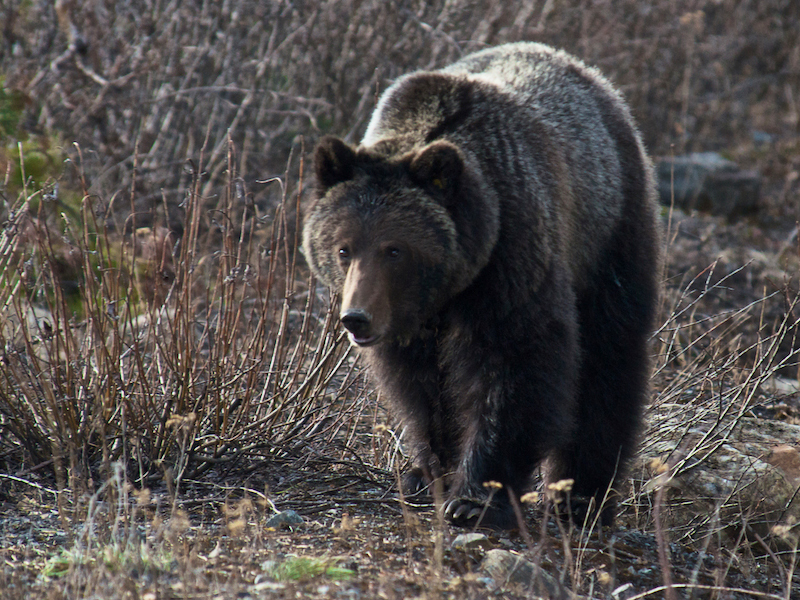Wings Over the Rockies Festival 2017
Wings Over the Rockies, one of Canada’s largest wildlife festivals, draws hundreds of visitors each year in May to the Upper Columbia River region of British Columbia. This year Wings runs from May 8 to 14.
Here, in the valley that lies beneath the spectacular Canadian Rocky Mountains, we celebrate the incredible biodiversity of life in the wetlands of one of North America’s longest rivers. We are offered a rare opportunity to learn about birds and other wildlife species and see them up close and personal in their natural habitat.

The Wetlands
The Columbia River wetlands are a 180-kilometre area from Canal Flats to Duncan, one of the longest systems of continuous wetlands in North America and one of the few remaining intact portions of the Pacific flyway, essential to migrating birds. Because there is no other place on the planet exactly like it, it was designated a Ramsar ‘Wetlands of International Significance’ in 2005.
The wetlands, with its immense variety of ecosystems, provides ideal breeding grounds and essential stopping-off points for more than 265 species of migratory birds as well as other wildlife species. As other ecosystems around the world vanish in the wake of encroaching civilization, the wetlands of the Columbia River become more and more valuable, something to be appreciated and carefully stewarded.
The Festival
This year’s Wings Over the Rockies Festival is based upon the theme Birds, Bats, Bears and Beyond and participants will explore:
- Canada’s interconnected but increasingly challenged wildlife, including migratory birds
- mysterious bats and grizzly bears, symbols of wilderness
- insights into the lives of these animals and the conservation challenges in protecting them
The seven days of the festival are jam-packed with more than 70 events from which participants can discover the world of Birds, Bats, Bears and Beyond. You can choose an early morning guided nature walk, canoe or kayak on the Columbia River or in the wetlands, take a field trip or two or go horseback riding in the grasslands.
There are art exhibitions, evening presentations, workshops, ‘bird-a-thons’ and even a gala banquet with a silent auction. An impressive list of biologists, naturalists, conservationists and others lead the field trips and five informative presentations, combining education with pure enjoyment of the magnificent surroundings.
During the event, Wings Over the Rockies Festival speakers will give presentations in Columbia Valley schools.
The Birds

Situated in a grassy plain along the Columbia River, amid tall forests and mountain meadows, the Columbia Wetlands have been called the ‘Serengeti of the north.’
Over 300 species of birds breed each year in British Columbia, more than in any other province in Canada, and 65 of those species breed only in British Columbia. Over 265 bird species have been recorded in the wetlands to date.
In the fall of 2016, the Columbia Wetlands Waterbird Survey (CWWS) recorded 51,261 birds over 3 dates. On one date 20,784 birds (75 species) were counted at 85 locations! This data and others will be used in an application to have the area designated as an Important Bird Area (IBA), one of over 600 locations across Canada.

The Bats
There are at least 11 species of bats in the Kootenay including vulnerable and threatened species. Several are red or blue listed.
Like much of the wildlife population and biodiversity in the region, the number-one threat to the survival of bats is human development resulting in loss of habitat. Forestry, fire suppression, cattle ranching, and mine closures all play a part in the dwindling bat populations in the area. One of the major reasons though is many people’s fear and loathing of bats, thus exterminating them without thought for the considerable value this species contributes to keeping harmful insects in check.
Bats eat huge amounts of flying insects, sometimes more than their own weight in insects per night, many of them mosquitoes.
Fortunately, many people are waking up to the necessity for protecting the bat population but there is still much to do.

The Bears
Grizzlies are an indicator of the ecological health of a region. They are known as an ’umbrella’ species because where grizzly populations survive and thrive in a certain region, that region is able to support many other species as well.
BC is one of North America’s last remaining regions which support large predators, thus there is a need to diligently protect the integrity of their habitat here in the province.
The grizzly plays an important role in First Nations culture. And by distributing salmon remains that nourish the soil in forests and transporting seeds in their feces, they contribute huge benefits to our forests and grasslands.
Grizzlies also attract wildlife viewers and hunters, thereby contributing to the tourism industry, thus the economic welfare of the province.
Special Guest Speaker
Special guest speaker at the gala celebration will be Danny Catt, who is an internationally renowned conservationist, photographer and environmental educator. Danny grew up in Vancouver, the youngest of 7 children. His father took him and his 5 brothers camping in natural areas all over North America and the young boy developed a love for conservation.
He attended Langerra College and has a BSc in biology and biological sciences from Simon Fraser University. He has worked with Parks Canada in park planning and received a ‘Preserve Planet Earth’ scholarship from Rotary International to study conservation world-wide. Today he is program head of British Columbia Institute of Technology’s Fish, Wildlife and Recreational Land Management Program.
For more information about the Wings Over The Rockies festival, visit the website at http://www.wingsovertherockies.org/

